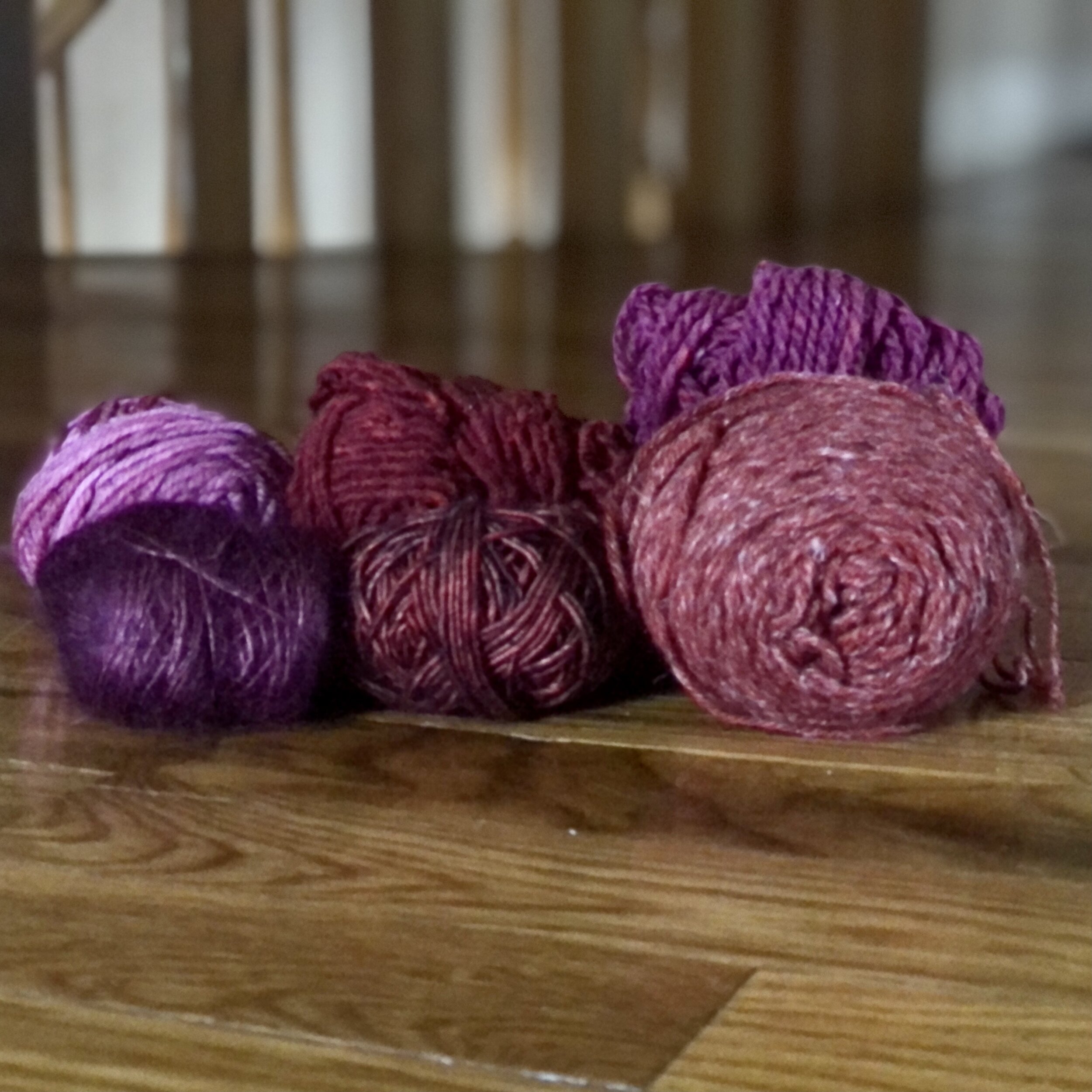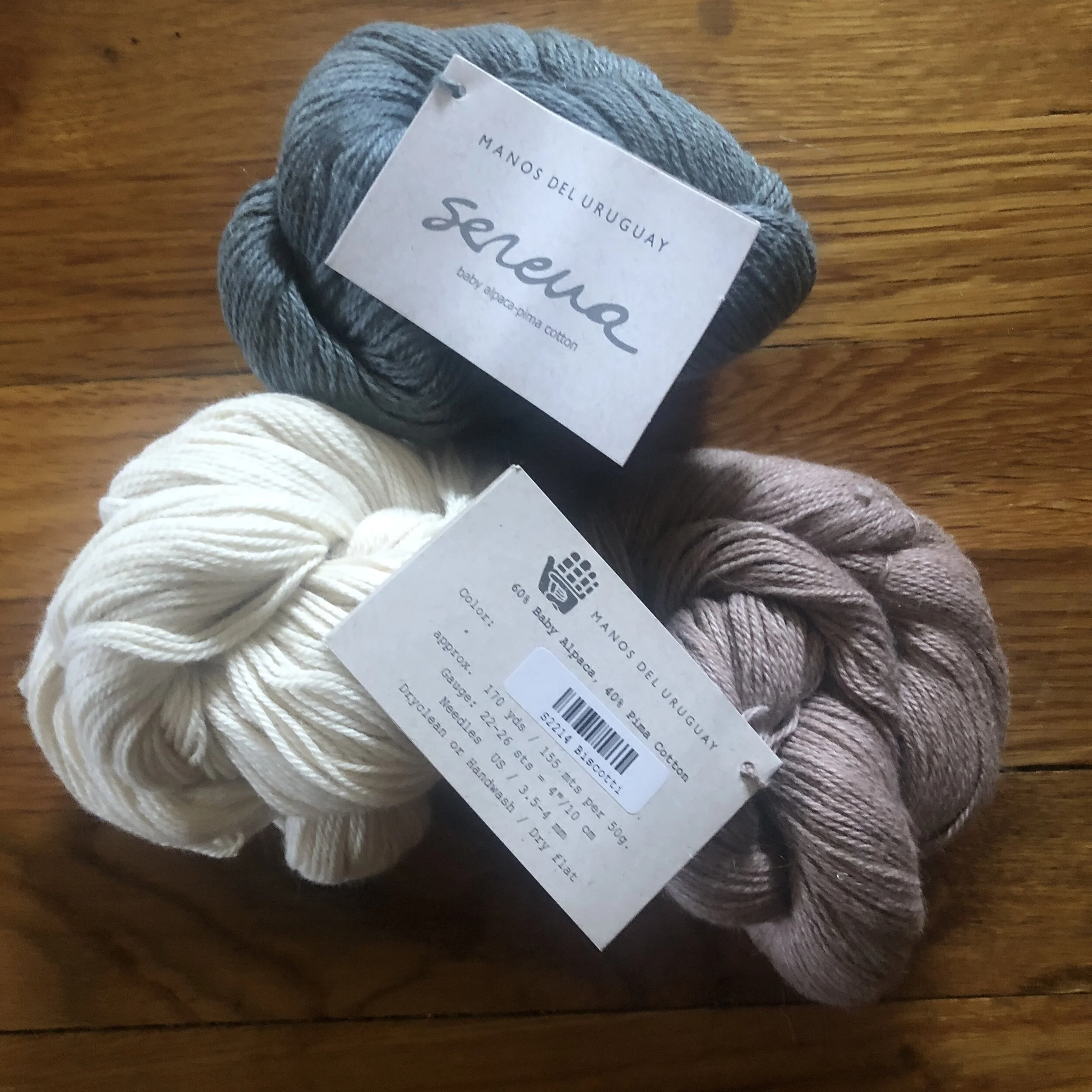Math Monday: Yarn Weight (category) vs. Yardage
Last Monday, I wrote about how to calculate yardage of a mystery skein based on weight by using ratios. (If you haven’t read that one, it’s worth a look - there’s some good, old-fashioned algebra there.)
Most knitters know that when we speak about yarn weight, we’re not really talking about how much the yarn weighs, but the category the yarn falls into - lace, fingering, sport, DK, worsted, aran, bulky or super bulky.
Yarn weight study in pink
counterclockwise from front left: Shibui Silk Cloud (lace), Madelinetosh Tosh Merino Light (fingering), Stolen Stitches Nua (sport), unknown bulky, Brooklyn Tweed Shelter (worsted), The Knitting Boutique Anacostia (DK).
A Rough Yardage Guide to Yarn Weight Categories
lace 550 - 800 yards per 100g
fingering 380 - 460 yards per 100g
sport 300 - 360 yards per 100g
DK 240 - 280 yards per 100g
worsted 200 - 240 yards per 100g
aran 120 -180 yards per 100g
bulky 100 - 120 yards per 100g
super bulky <100 yards per 100g
And there is some wiggle room, too. One dyer may call a skein sport weight, while another calls the same skein light DK. And there is quite a bit of confusion about the difference between bulky and super bulky, and if there is really any point to distinguishing them from each other.
In this week’s installment of Math Mondays, we’ll work out what yarn weight our mystery yarn is using more ratios.
In order for us to use our chart accurately, we'll need to figure out how many yards of our mystery yarn would be in a 100g skein, not the 113g skein we have. So we set up another ratio.
The calculations indicate that a 100g skein of the mystery yarn would be 150 yards, meaning that it would fall into the aran weight category of yarns.
Of course, not all yarn comes in 100g skeins. Some yarns, like this one - Manos del Uruguay Serena - comes in 50g skeins. Serena has 170 yards per skein. To find out how much would be in a 100g skein, simply multiply the yardage by 2 (because you’d need to multiply the 50g by 2 to get to 100g.). A 100g skein of Serena, therefore, would have 340 yards, putting it in the sport weight category.
This works just the same with meterage (for my non-US knitter friends). Just substitute meters wherever yards are used. And there are still some companies putting up skeins in ounces. If ounces are being used, standard skeins are either 4 oz. which converts to 113g, or 3.5 oz. which is very close to 100g.
Of course, you can also use this neat trick when you’re buying yarn online or at a shop. (Remember those days, when we could browse around our LYS?) Some yarn labels have the yarn weight category. Some shops and online sites have their yarns sorted out or list the yarn’s weight category, but many don’t. So knowing how to do this will give you a super power that will impress your knit night friends and fellow LYS customers.





